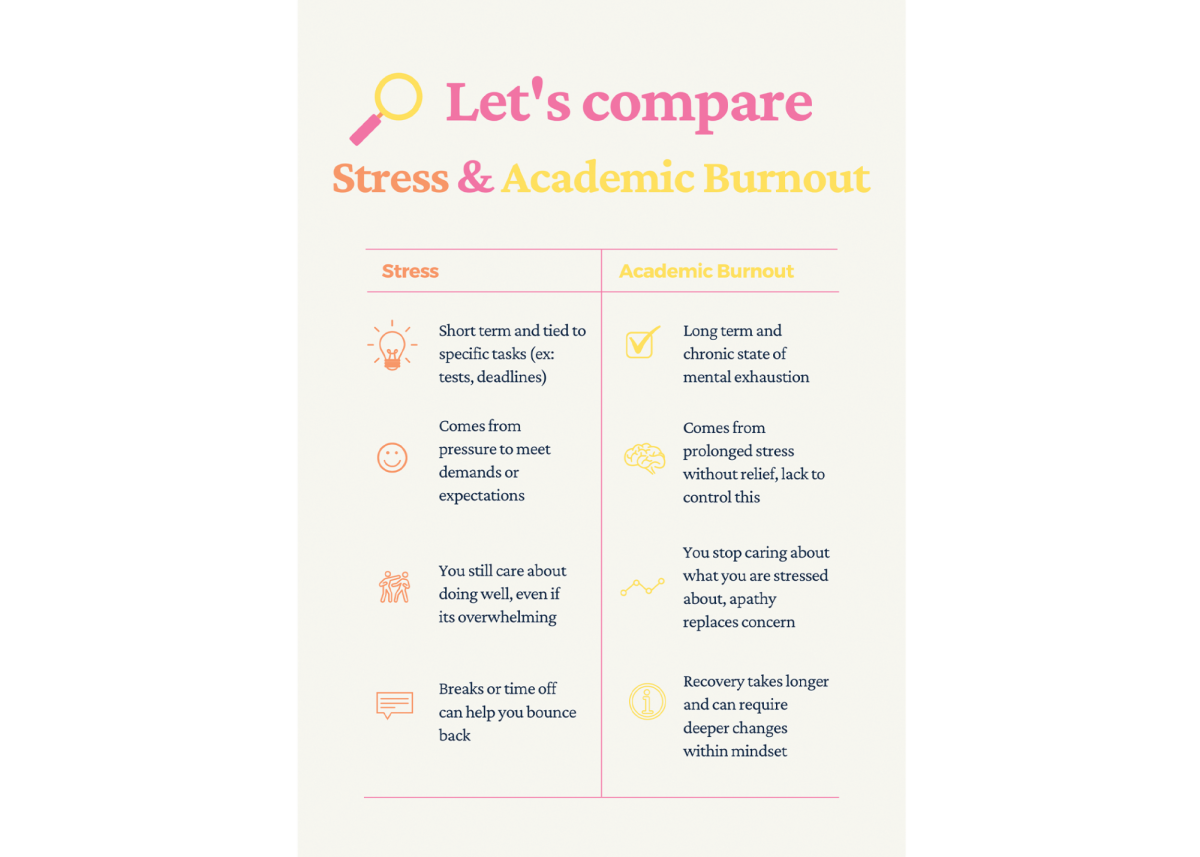Conspicuous Consumption
Trendy fast fashion leads to overconsumption of clothes
May 4, 2022
As the Earth begins to burn to its end due to the ongoing climate crisis, voices around the world have been insisting on taking action before it is too late.
Although some steps have been taken in America to address the issue — such as President Joe Biden signing for the United States (U.S.) to rejoin the Paris Climate Agreement on Jan. 20, 2021 — one “innocent” industry, in particular, seems to be silently destroying the environment surrounding us — the fashion industry.
According to Earth.org, an organization that provides environmental news, data analysis, research and policy solutions, the fashion industry makes up at least 10 percent of the world’s carbon emissions and 20 percent of the wastewater. Unfortunately, with the over-saturation of social media — contributed by celebrities and influencers — fashion trends come and go faster than the four seasons, thus leading to a prime issue called “overconsumption.”
Fast Fashion
For more context, the wide- spread issue begins with fast fashion. Fast fashion is defined as “inexpensive clothing produced rapidly by mass-market retailers in response to the latest trends,” according to The Oxford Dictionary.
In addition, it is trendy yet cheap clothing that takes inspiration from runway shows or from celebrity/ influencer culture. It is then quickly put on the market to meet the demand and hunger of consumers to feed into the fashion trends simply to go along with the crowd. The mass production of clothing is nothing but an attempt to make a company’s revenue grow at a faster pace.
Fast fashion is a prominent marketing method used by chains around the world to design and manufacture textiles. As the price for the production of clothing decreased over time, companies began to use cheap-quality materials like polyester and nylon [plastic fibers] to sell inexpensive and affordable clothing. With this, companies can manufacture new styles weekly to guarantee customers always have something trendy in their closets. Common brands that are known to use this quick method include H&M, Shein, Zara, TopShop, Romwe, Fashion Nova, Forever 21, Urban Outfitters and more.
According to Fast Company’s article titled, “Your H&M addiction is wreaking havoc on the environment. Here’s how to break it,” author Elizabeth Segran stated, “[clothing] companies make 53 million tons of clothes in the world annually…If the industry keeps up its exponential pace of growth, it is expected to reach 160 million tons by 2050.”
Overconsumption
Overconsumption often pairs with fast fashion. Overconsumption is where an individual buys more than what they need, which then cycles through the goods too quickly. As society has gone through many technological advances, accessing websites to buy clothing anytime and anywhere has been great for convenience, but the quantity of clothing one can buy at once could result in harmful effects.
Clothes that should last a few years, only last for a few weeks as they are discarded and replaced by something new weekly, speeding up how much one will buy to meet what they need because of how rapidly trends go in and out of style.
Fashion Trends and Social Media
Platforms including Instagram and the video-making app TikTok are carriers of the romanticization of overconsumption. Many app users are guilty of having found their way to fashion inspiration, leaving them scrolling through the end- less amounts of outfit combinations made up from a variety of different colors, patterns and eras. Social media is known for spark- ing up trends and having them hit screens worldwide, and though it may seem like a connection, it’s breaking sustainability and consideration.
Based on a voluntary survey taken by 169 Lincoln Southeast High School (LSE) students, 84.6 percent of students believe that social media worsens the growing problem of overconsumption.
LSE junior Allison Maw, a student who chooses to buy sustainably and engage in conscious buying, believes that social media is at fault for the worsening of our buying habits.
“Social media has a huge impact on overconsumption. Fads come
and go so fast online, causing the demand for clothing to be so much higher because of our consumption of media,” Maw said. “The influence that people have on us to buy and invest our money in buying [clothes] from fast fashion websites or stores is at fault, too.”
When diving deeper into why social media is hurting the planet through overconsumption, a phenomenon called “micro-trends” carries much of the blame.
Micro-trends can be defined as trends that quickly rise and die in popularity. They usually last for three to five years, but the timeline has been declining to around a few months due to a trend called “Shein Hauls.”
A popular micro-trend on TikTok is “clothing hauls,” or shop- ping sprees, which are videos where someone shows off clothing items they have recently purchased.
A similarity amongst the videos is that they all appear to be from the same culprit: Shein; a Chinese online fast fashion retailer known for selling very cheap clothing. A search on the discovery page of TikTok for #sheinhaul shows videos of people’s purchases, with all of the videos in the hashtag gathering over 4.3 billion views as of early Feb. 2022.
In these videos, the creators are typically girls spending upwards of 2,000 dollars solely on clothes from Shein. The purpose of the videos varies for the creators, but some have made careers out of overconsumption due to the audience’s reinforcement of engagement through likes, views and comments, leading to a never-ending cycle of buying and wasting just to show off.
The ripple effect from the hauls, though, is giving a “thumbs-up” to consumerist culture by indirectly telling viewers that it’s normal to buy large quantities of clothing weekly
to stay on top, making the overconsumption issue significantly worse.
Based on the same voluntary survey taken by 169 LSE students, 52.7 percent of students have over- consumed by buying a clothing haul at least once a year. Some of the reasons included back-to-school shopping, outgrowing old clothing, holiday shopping or for a change in weather.
On the contrary, LSE junior Mia Andazola’s drive to shopping hauls is for her own self-expression.
“I consider myself to know more about fashion trends because I enjoy fashion,” Andazola said. “I like to stay in trend and try out something new.”
Besides clothing hauls, “look- books” and “try-ons” have gained their fair share of popularity, thus further spreading the persuasion of afford- able and accessible fashion to be the only way to fit in, along with normalizing the need for more clothes to look a certain way.
Alternatives
Although there are pros to buy- ing fast fashion, such as convenience and a low price tag — especially for students who struggle financially — Maw believes that there should still be some consideration before purchasing.
“I absolutely understand not having money to buy sustainably, but buying secondhand can be cheaper, depending on the sales [offered] and what shops you go to,” Maw said.
35.5 percent of survey respondents find shopping sustainably more difficult due to their financial situation.
Sustainable brands such as Patagonia, Reformation, Pact and Hass have a higher price tag due to their slow, careful manufacturing process using high quality materials. Because of this, it may seem harder or intimidating to buy consciously.
Buying second-hand is a proven way to buy clothes without severely damaging the environment. Some second-hand shops to visit around the city of Lincoln are local Good- wills, Salvation Armies, One More Time (OMT), Plato’s Closet, and Ruby Begonia’s. Some online second-hand shops to those who prefer contact- less shopping are Depop and Posh- mark.
Other ways to become more aware of your shopping habits are to simply ask yourself questions and reflect before buying a piece of clothing. Maw has taken this approach into her own purchases, even when buying second hand.
“Before I buy clothing I make sure it’ll last long, if I [truly] like it and how I could style it,” Maw said.
Although Andazola purchases fast fashion, she still takes into consideration the clothing she has put into her shopping cart just like Maw.
“Before buying from fast fashion I ask myself: ‘Am I really going to wear this a lot?’ ‘Is it worth buying?’ and ‘Can I find this somewhere else for possibly the same amount?’” Andazola said.
Maw feels as if the importance of trends and fitting in has outweighed the attention put on the dying planet.
“The sad truth is that lots of people care more about trendy clothes and looking good rather than being aware or stopping the mass buying of clothes,” Maw said.
The climate crisis isn’t just a factor of the excess burning of fossil fu- els, pollution or overflowing amounts of waste in landfills, it’s also a reality of careless shopping habits that are accumulated by thousands of people around the world.
Fashion is an outlet for expression and self-identity, but there will no longer be a chance to tell the world who one is when there’s no ground to stand on. The more society pays attention to the trends on social media rather than the increasing trends of global warming, there will not be an end to the issue.
Small steps to fixing shopping habits may not seem like much at the beginning, but as those steps are collected by thousands of people, there will be progressive changes in the overconsumption part of the fashion industry.
“I would truly hope that in the future people will become more aware of overconsumption and buy- ing from unethical brands,” Maw said.









